Photo Album: Posters at the Capitol 2010
February 18, 2010 | News, People, Photos, Research, Student Success | No Comments
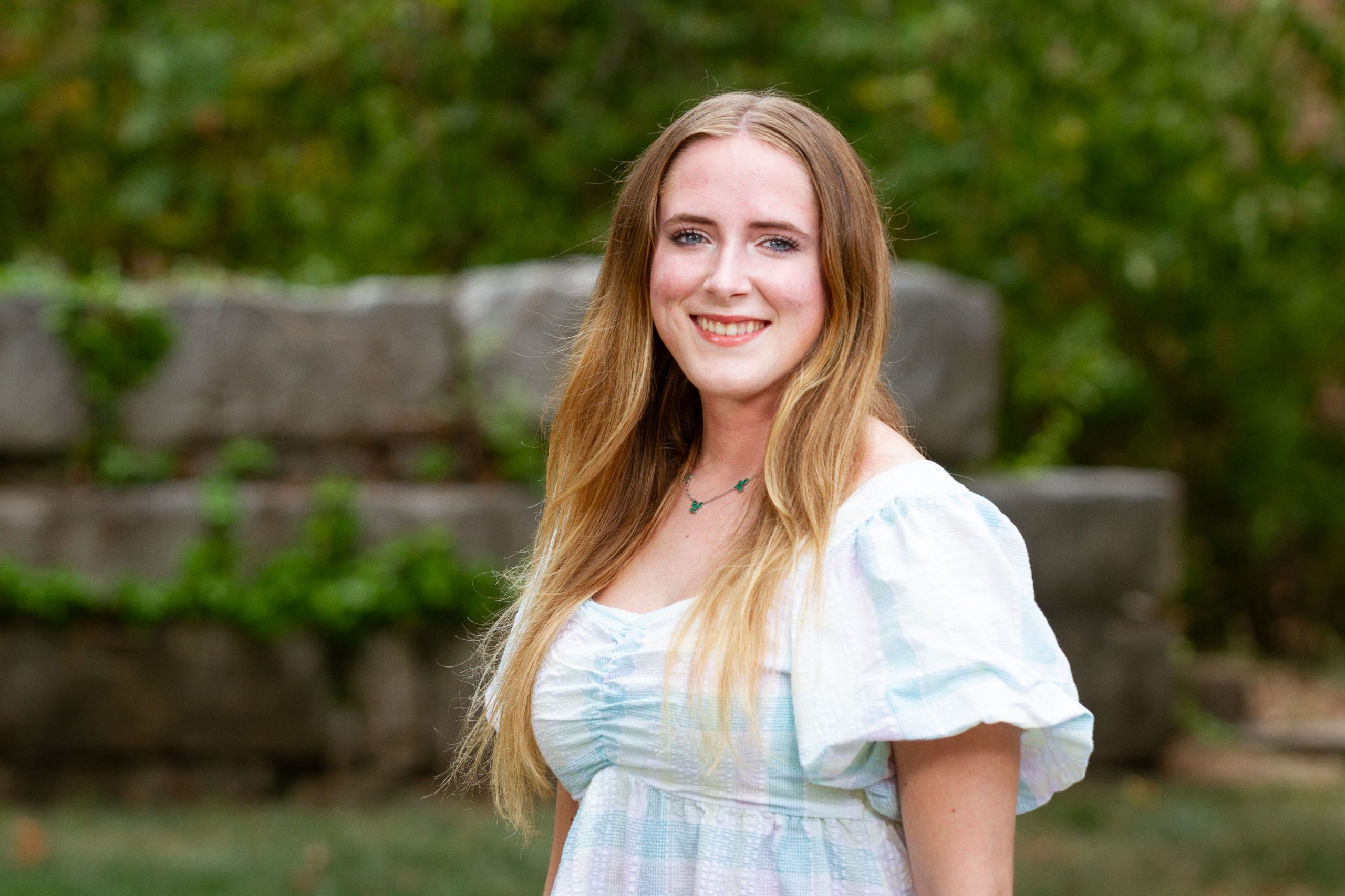
July 4, 2025
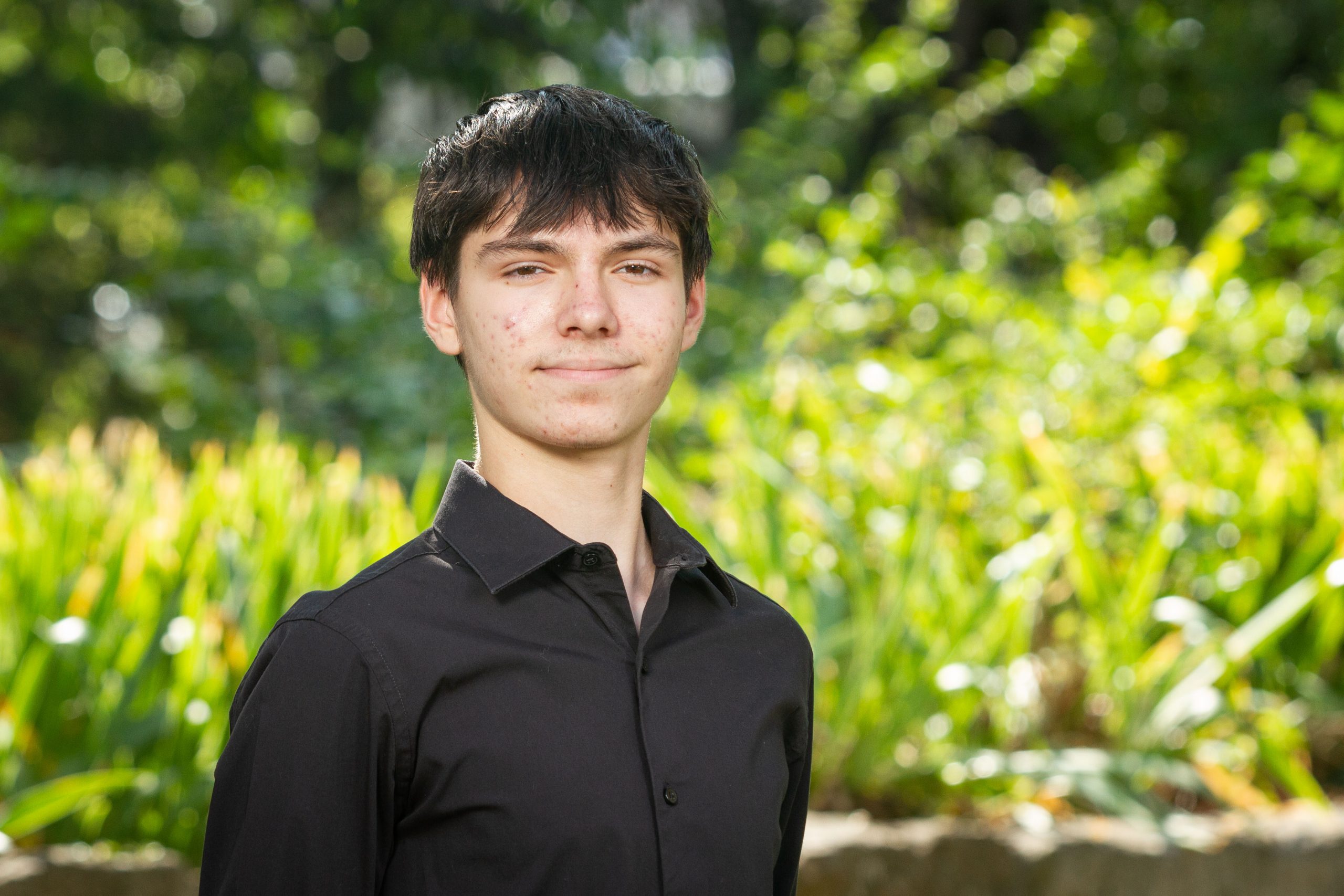
June 5, 2025
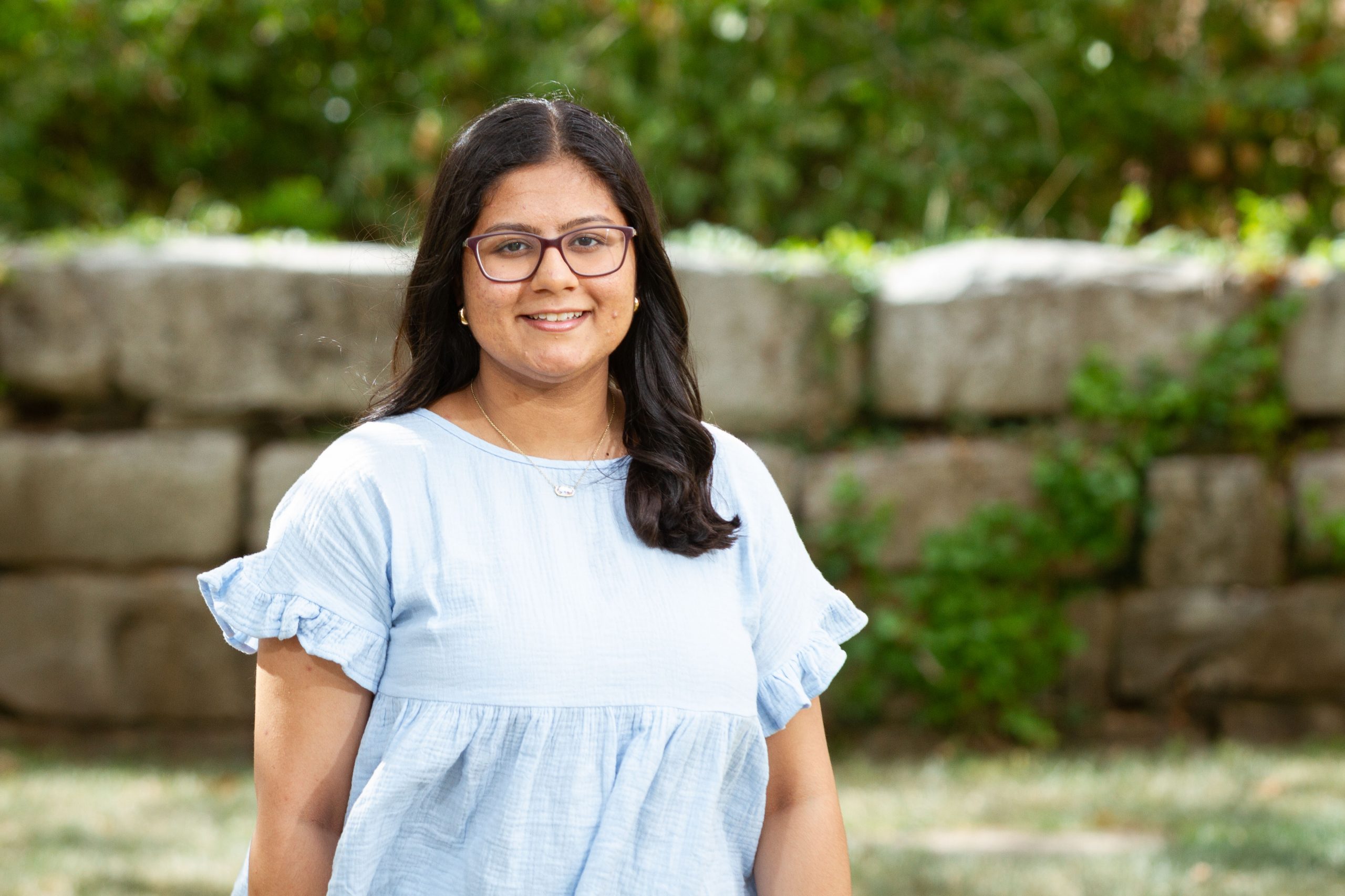
May 5, 2025
February 18, 2010 | News, People, Photos, Research, Student Success | No Comments
February 12, 2010 | Academics, News, People, Research, WKU | No Comments

Nine Gatton Academy of Mathematics and Science in Kentucky students were among hundreds of undergraduates from across the Commonwealth who presented their academic research at Posters at the Capitol 2010 on January 28 in Frankfort.
Posters at the Capitol is an event held during the legislative session where students from Kentucky’s eight public universities and the community and technical college system share research findings with the state’s legislators and decision makers.
A key feature of Posters at the Capitol is the chance for students to talk one-on-one with their state representatives and senators about the value of research at the undergraduate level.
Thomas Choate (Warren ’10) believes it is extremely important for legislators to realize the role these emerging thinkers and industry leaders will play in the future of the state and it’s economy.
“As a Gatton Academy student and an undergraduate researcher, it is imperative to ensure the support of state legislators by demonstrating that undergraduate involvement in research at Kentucky’s post-secondary institutions holds great potential for the state,” Choate said.
Second-year student Katie Rush (Franklin ’10) agrees: “As a student in a state-funded program, I think it is very important to show what you have learned to those who have made this opportunity available, to demonstrate that their efforts were well worth it,” she said.
In all, Gatton Academy students were able to meet with six of Kentucky’s senators and nine members of Kentucky’s House of Representatives to talk about the research work they have been able to conduct through Western Kentucky University’s Ogden College of Science and Engineering.
Held in the State Capitol’s Great Hall, nearly 200 students shared their research work this year. Research posters ranged across disciplines in both science and the humanities.
Jae Lee (Christian ’10), who presented with three of his lab partners, commented that his experience was equally exciting and education. “Not only was I grateful to see interest from lawmakers to our work, I also got to see a lot of intriguing and advanced research projects from other students,” he said. “Moreover, it was great to hear positive feed-back and encouragement from the legislators and senators.”

The Gatton Academy not only challenges students to perform research at the undergraduate level but also encourages them to share the knowledge they discover with academic peers across the state and country. To date, Gatton Academy students have also presented at the Kentucky Academy of Sciences annual meeting, the Women in Physics national conference, and the Argonne National Laboratory Research Conference during the 2009-10 academic year. Additionally, students will share research at the WKU Undergraduate Research Conference later this month.
“Presenting research is a chance to not only practice speaking and communication, but also to show your thorough knowledge of a subject and ability to answer difficult questions you’ve never been asked before,” Rush observed.
Now through its tenth year, Posters at the Capitol has become an annual destination for undergraduate researchers from across the state.
Gatton Academy participants and their research projects included:
Thomas Choate (Warren ’10) Using Sustainability Indicators to Guide Local City Growth
Clarice Esch (Pulaski ’11): Is Collema sp., a Gelatinous Lichen, a Sustainable Source of Nitrogen for Greenhouse and Nursery Crop Production?
Victoria Gilkison (Anderson ’11) : Ecology of American Ginseng (Panax quinquefolius) at Mammoth Cave National Park and Justine Missik (Boyle ’11): Microbial Networks Create Pathway Proliferation in Marine Food Webs
Alexander Hare (Rowan ’10), Ben Neal (Estill ’11), Jae Lee (Christian ’11) and Paul “P. J.” Kasinski (Boone ’11): Genomic Comparison of C. scatologenes to M. thermoacetica
Katherine Rush (Franklin ’10): Landfill Contaminant and Fluorescent Dye Interference Project
For more information, contact Derick Strode at 270-745-6565.
/Personnel_Cabinet_files/cap_0048_sm.jpg)
Twenty-four WKU students, including nine from the Gatton Academy of Mathematics and Science in Kentucky, will participate in the ninth annual Posters-at-the-Capitol event on Jan. 28 in Frankfort.
Posters-at-the-Capitol, an event hosted collaboratively by WKU, Eastern Kentucky University, Kentucky Community and Technical College System, Kentucky State University, Morehead State University, Murray State University, Northern Kentucky University, University of Kentucky and University of Louisville, is intended to help members of Kentucky’s legislature and the governor better understand the importance of involving undergraduates in research, scholarly and creative work.
Gatton Academy students and their poster projects include (more information on the projects is available on the Posters-at-the-Capitol booklet):
Thomas Choate (Warren ’10) Using Sustainability Indicators to Guide Local City Growth
Clarice Esch (Pulaski ’11): Is Collema sp., a Gelatinous Lichen, a Sustainable Source of Nitrogen for Greenhouse and Nursery Crop Production?
Victoria Gilkison (Anderson ’11) and Justine Missik (Boyle ’11): Ecology of American Ginseng (Panax quinquefolius) at Mammoth Cave National Park and Microbial Networks Create Pathway Proliferation in Marine Food Webs
Alexander Hare (Rowan ’10), Ben Neal (Estill ’11), Jae Lee (Christian ’11) and Paul “P. J.” Kasinski (Boone ’11): Genomic Comparison of C. scatologenes to M. thermoacetica
Katherine Rush (Franklin ’10): Landfill Contaminant and Fluorescent Dye Interference Project
For more information, contact Derick Strode at 270-745-6565.
Several Gatton Academy students accompanied by WKU faculty members attended the Kentucky Academy of Science’s 95th annual meeting Nov. 13-14 at Northern Kentucky University.
For Alex Hare (Rowan ’10), simply choosing what sessions to attend was the hardest part.
“KAS had quite a number of interesting posters and presentations over quite a few interesting scientific fields,” Hare said. “Mostly I regret that I didn’t have more time to see more of them. I would gladly have spent two days seeing presentations and posters if that were possible.”
Students both made presentations at the conference and attended presentations from other faculty members and undergraduate students at other Kentucky institutions of higher learning.
Hare, along with three other Gatton Academy students, were honored with an outstanding for their poster Genomic Comparison of C. Scatologenes to M. Thermoacetica in the computer and information sciences division. Additional presenters on the post included P.J. Kasinski (Boone ’11), Jae Lee (Christian ’11), and Ben Neal (Estill ’11).
Clarice Esch (Pulaski ’11) was honored with an outstanding for her poster Is Collema sp., a Gelatinous Lichen, a Sustainable Source of Nitrogen for Greenhouse and Nursery Crop Production? in the agriculture division.
Justine Missik (Boyle ’11) believes the conference will serve as a springboard for pursuits both now and later.
“It was interesting and inspiring to learn about all of the various projects that were presented,” Missik said. “KAS was a wonderful opportunity to get experience in presenting scientific findings, which will be a very important skill later.”
Leah Frazier (Greenup ’10) added that the KAS conference was the best thing to happen to her since getting accepted into the Academy.
“Before going I was confused about my future plans, even though I am still relatively undecided, KAS helped me determine where I want to direct my life,” Frazier noted. “I enjoyed seeing researchers from all walks of life and ages come together at one event to present what they’ve been working on. It was inspiring to hear the achievements of older generations and imagine the improvements the younger generation is going to bring to society and life.”
Additional presentations included:
Justin Jatczak and Leah Frazier
The Effect of Endothelin-1 and 5-Fluorouracil on Wound Healing of Corneal Endothelial Cells
Kevin Andrew
Identification of DNA biomarkers for determining sources of fecal pollution in water
Torey Gilkison
Demographics of American ginseng (Panax quinquefolius) in Mammoth Cave National Park
Justine Missik
Influences of Microbial Networks on Food Webs
For more information, contact Derick Strode at 270-745-6565.

As cities move toward the future in an era of declining budgets, limited resources, and high demands for services, sustainability indicators is a tool some cities are using to set goals and assess progress toward building a more healthy and sustainable community.
Thomas Choate (Warren ’10), a student at the Gatton Academy of Mathematics and Science in Kentucky at Western Kentucky University, realizes the time for action is now.
After spending the summer conducting applied research under the supervision of Nancy Givens, Sustainability Programs Development Coordinator with the WKU Center for Environmental Education and Sustainability, Choate was invited to share his findings before the Bowling Green City Commission on October 20, 2009.
The presentation of this work to the Commission was arranged through City Manager Kevin DeFebbos.
Sustainability indicators recognize the essential links between the economic, social, and environmental aspects of a community, and are used to identify problem areas and develop solutions that impact all areas. For example, poor air quality (environmental) may affect asthma rates (social) and worker productivity (economic).
By improving air quality, cities can positively impact social and economic factors in the community as well. Within a sustainability framework “development is about improving aspects of the community and the environment that contains that community without detrimental effects to other aspects; it is not about growth beyond our means or growth at the expense of others or our environment,” said Choate.
Important criteria for sustainability indicators as identified Choate are that they be relevant to the community, easy to use by all members of the community, repeatedly measurable, and relevant to recent developments and available quickly enough that action to address change is possible.
Sustainability indicators may focus on education, healthcare, employment, environment, population, and transportation goals, among others. Some examples of sustainability indicators that have been used by other cities are ‘ratio of parks to population’ (per capita green space), ‘proportion of recycled materials diverted from landfill’, and ‘ratio of the average cost of a single family home to median household income’.
From his research, Choate concluded that The City of Bowling Green and the surrounding community should consider adopting goals toward a sustainable community and indicators to measure progress towards these goals; that by incorporating existing information and collecting new information, we can establish baselines for many factors which we may seek to improve through directed efforts in the future; and, that if the City doesn’t do so, it may find itself not taking full advantage of the opportunities it has to develop economically, environmentally, and socially for its citizens.
Even though Choate is sharing his findings, he realizes there is still a tremendous amount of work ahead.
“I intend to continue my work on sustainability indicators for the local area with the WKU Center for Environment Education and Sustainability,” Choate noted. “The next step toward Bowling Green adopting sustainability indicators is developing with the City Commissioners and other members of the community a set of indicators that will be relevant and feasible to assess with the resources the city is willing to commit to the project. Additionally, I am working with the WKU Department of Engineering to analyze the heating efficiency of buildings on campus using infrared technology.”
According to Choate, playing an active role in shaping public discussion on important issues should be a priority for all young adults. “As future leaders in our society, students have a responsibility to be involved in the processes that affect their communities,” Choate said. “The experience of presenting information, suggestions, and concerns to a government body is a relevant opportunity to those in all fields of study.”
November 17, 2009 | Academics, News, Student Success | No Comments
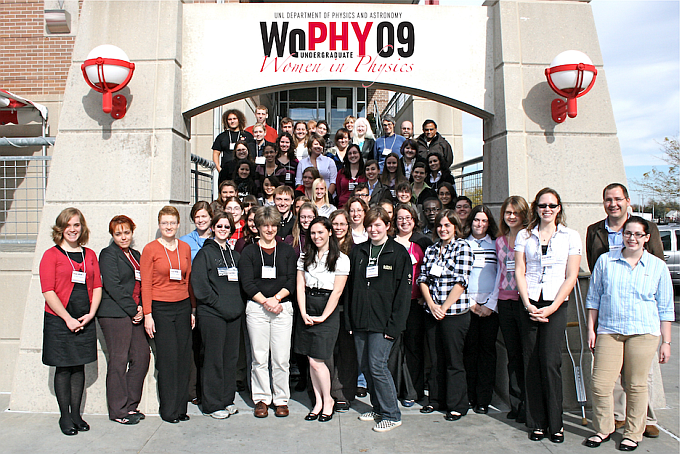
Katie Brown (Shelby ’10) quickly realized the opportunity to conduct scientific research was something that would set her apart from the crowd of other high school students.
As a student at the Carol Martin Gatton Academy of Mathematics and Science in Kentucky at Western Kentucky University, she began a research project with Dr. Ed Kintzel during Summer 2009.
Her work went from as a participant in The University of Nebraska – Lincoln’s 2009 Conference for Undergraduate Women in Physics. Held October 30-November 1, 2009, the conference presented an outstanding opportunity for students like Brown to expand upon their current research experiences, interact with physics students from other universities, and attends scientific talks given by invited physicists from other Midwestern universities.
Brown’s presentation focused on the behavior of atoms in graphite surfaces. The real-world implications of her study will help to further applications and research with graphite and materials sciences.
“I shared research on the reconfiguration of atoms near step edges we observed on the surface of graphite using Scanning Tunneling Microscopy,
Brown noted. “In a little more simplified terms, I observed atoms reconfiguring on graphite surfaces due to their proximity to step edges.
As one of the conference’s youngest participants, Brown expressed she was a bit nervous leading up the session. “Presenting to such a large community of my peers was a nerve racking prospect,” Brown said. “but after getting on stage I was able to focus on my research and connect with the audience.
In addition to lectures, social activities also provided time for participants to share their experiences and interests with other students, as well as visit with physics faculty members from UNL and other Midwestern universities. These experiences provided opportunities for students to develop their ability to convey ideas, establish relationships with other physicists, and obtain advice and guidance for pursuing career goals.
“In attending this conference, I gained a broader understanding of the vast opportunities for research for undergraduates,” Brown said. “Also, I was able to connect and network with students from across the nation.
For Brown, research is an important first step in preparing for careers in advanced STEM disciplines.
“Research is a very important part of the Academy experience because it allows you to apply the knowledge you learned in the classroom, practically,” Brown noted. “If you foresee research in your career, it is a great way of actively preparing for your future educational prospects and even your occupation.”
Not only did Brown have the support of Academy staff members and her research supervisor. Ask Brown who one of the greatest advocates for getting young women interested in math and science, and her reply is simple: her mom.
“My mother is an active promoter for women in the STEM fields; she started a Girls in Science Club at her middle school,” Brown said. “Starting initiatives throughout the state at the grade school level and even carried through to High School will help get more young women interested in the STEM fields.”
October 16, 2009 | Academics, News, Student Success | No Comments

Ballard Metcalfe of Eminence, Ky., didn’t seem nervous as he stood before a panel of legislators, policy advocates and business leaders in a meeting room of the Library of Congress.
Metcalfe, a senior at the Carol Martin Gatton Academy of Mathematics and Science in Kentucky at WKU, along with representatives from six other specialized high schools shared research on reducing greenhouse gas emissions on Oct. 14 to The Keystone Center’s National Energy Board in a session held in Washington, D.C.
Metcalfe wasn’t worried that his audience would dismiss the group’s message because of their age. Instead, it made him all the more confident.
“Students are able to create solutions that are ultimately bipartisan and pragmatic solutions, without many of the anxieties our current leaders face, such as protecting their own power,” Metcalfe said. “We are objective and our only goal is for the future.”
The Energy Board is a unique group of 50 national leaders on energy policy issues. Metcalfe and his colleagues from other National Consortium for Specialized Secondary Schools of Math, Science and Technology (NCSSSMST) schools were granted a tremendous opportunity to take action and affect energy policy in the country today, and as they consider their college and career choices in the future.
The proposal’s genesis came during the 8th Keystone National Youth Policy Summit (YPS). In June 2009, 30 students from seven math and science schools from across the country came together in Keystone, Colo., to develop consensus-based recommendations on reducing greenhouse gas emissions across the United States.
Additional Gatton Academy students participating in the conference included Elaine Flynn of Demossville, Ky., Alexander Hare of Morehead, Ky., Holly Mitchell of Salvisa, Ky., Kaitlin Oliver of Central City, Ky., and Hunter Smith of Elizabethtown, Ky.
The summit and subsequent white paper allowed participants to take stock of the larger technical, legal, environmental, social, economic, and political problems associated with current and future reductions in emissions across 10 sectors of the economy. Students shared their own research, sharpened the definition of the issues and options, and sought consensus on recommendations.
Derick Strode, the academy’s coordinator for research, internships, and scholarships, explained the summit and presentation were an extraordinary opportunity to combine advanced research with real implications.
“This was a chance for Ballard to apply his research, learning, and ideas to an important, real-world application,” Strode said. “As one member of the energy board pointed out, the presentation was especially influential because the students’ were not coming with any special interests to represent.”
Given the global emphasis on reducing greenhouse emissions, the topic serves as both a timely and relevant for emerging young leaders in science and mathematics. With guidance from the experts in science and public policy, these high school students produced viable approaches to dealing with a problem that is confounding national policy makers as well as those in state legislatures across the U.S.
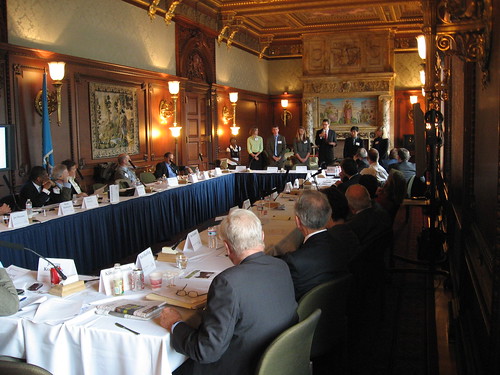
“Reducing greenhouse gases will be of utmost importance for the preservation of the environment for my generation, and many generations to come,” Metcalfe said. “It is important that we work towards achieving the goal of reducing greenhouse gases before it is too late, and one way to work toward that goal is by means of our recommendations.”
The findings were reported to energy and government leaders within their communities. Greenhouse Gas Reductions in the U.S. (PDF Link) represents the results of the students’ deliberations in the form of a written set of consensus recommendations.
Participants noted, if implemented fully and completely, the suggestions in this proposal would, over a four-decade time horizon, slow, stop and then reverse the trend of increasing carbonemissions in the United States. The primary driving force for these reductions in emissions is a market-oriented cap-and-trade system. Although the consensus statement was developed separate from, and independently of, other national initiatives, the economics bears striking similarities to H.R. 2454, or the Waxman-Markey Bill, which passed the House on June 26, 2009 — two weeks after the end of the student summit.
Student participants acknowledged the proposal is a compromise, and that it is not a perfect or a complete solution to the climate problem facing the United States. Instead, the policy suggestions were offered as possible catalysts for a shift in the nation’s perception of pollution, environmentally-friendly lifestyles, and policy making.
Metcalfe shared the advice given to him by a member of the board after Wednesday’s session.
“There are many people on either end of the spectrum, those in academia on one side, and the policymakers and politicians on the other,” he said. “Many times, these groups are not proficient at communicating ideas or understanding one another. Mediating between the two sides is an important task in our age, one that requires people who possess skills in both areas. Hard work on the part of people like myself and the other students who attended the YPS will be needed in order to mediate between the two ends of the spectrum, in order to form the policy that will make the world a better place for all.”
For information, contact Derick Strode at (270) 745-3167.
October 5, 2009 | Academics, News, Student Success | No Comments
 Five Gatton Academy students have been selected to participate in the NASA INSPIRE Online Learning Community.
Five Gatton Academy students have been selected to participate in the NASA INSPIRE Online Learning Community.
The Interdisciplinary National Science Project Incorporating Research and Education Experience (INSPIRE) is a multi-tiered year-round program designed for students in ninth- to 12th -grade who are interested in science, technology, engineering, and mathematics, or STEM, education and careers.
Sean Freeman, Desiree “Taylor” Harbin, Jacob Haven, Tyler Parke, and Dana Wheeler will interact online with students from across the country. Based on their work in the coming months, they may be eligible to compete for summer internships.
The Online Learning Community (OLC) is INSPIRE’s centerpiece providing a place for INSPIRE students to interact with their peers, NASA experts and education specialists. Through grade-level-appropriate educational activities, chats and the discussion board, students and their families will be exposed to the many careers and opportunities at NASA. The OLC also provides parents resources designed to help them champion their student’s education and career goals. Once accepted into the OLC, students and their parents remain participants of the community through the students’ freshmen year of college as long as they stay active participants.
Members of the INSPIRE OLC have the opportunity to compete for a grade-appropriate summer STEM experiences that will be available in 2010. The summer STEM experience is designed to provide hands-on experiences to investigate education and careers in STEM at a NASA facility or university. All summer experiences, except the collegiate experience, will take place at the NASA facility within the student’s service area. To locate the NASA facility corresponding to your service area please see the “NASA Facilities and Service Area” section.
Explorer Experience: INSPIRE OLC participants in the ninth-grade can compete for this summer experience. Students selected will receive an expense paid trip for them and an accompanying parent or legal guardian to the NASA facility within their service area for a VIP tour and workshop. The visit occurs the summer between the students’ ninth and 10th-grade.
Collegiate Experience: INSPIRE OLC participants in the 10th-grade can compete for this summer experience. Students selected will participate in a two-week on-campus collegiate experience at a university and are chaperoned by the host institution. This exposure to college life is designed to improve study skills and encourage the pursuit of higher education and careers in STEM areas. NASA will pay round trip travel expenses for those students who live more than 100 miles from the college or university providing this experience. The college or university provides lodging, meals, supervision and educational activities. The collegiate experience occurs the summer between the students’ 10th and 11th-grade.
Residential Internship: INSPIRE OLC participants in the 11th-grade can compete for this summer experience. Students awarded will participate in a paid eight-week apprentice experience with a NASA mentor at the NASA facility within the students’ service area. During the internship, students are provided:
— A stipend based on minimum wage for the state in which the NASA facility is located and a lunch allowance
— Meals and housing at a location within commuting distance from the NASA facility, typically a nearby college dormitory
— Daily transportation to and from work and required project activities
— During working hours, students are supervised and mentored by scientists and engineers at the NASA center. During non-work hours students interact with qualified, experienced and highly motivated professional educators. These educators provide supervision and implement the enrichment activities and cultural activities during after-work hours.
Collegiate Internship: INSPIRE OLC participants in the 12th-grade who have been accepted to attend a college or university to pursue a STEM degree can compete for this summer experience. Students awarded will participate in a paid eight-week intern experience with a NASA mentor at the NASA facility within their service area. In this internship, the student receives a stipend and he/she is responsible for making all lodging, meals, and transportation arrangements.
For more information, contact Derick Strode at 270-745-6565.
August 31, 2009 | Academics, News, Parents, Student Life | No Comments
KAGE Panel on High Ability Students from Gatton Academy on Vimeo.
Eight high school seniors at the Gatton Academy share their experiences as gifted students. Topics included many concepts: teacher practices in elementary, middle, and high school that were effective; challenges gifted students face; the importance of rigor and research; and opportunities afforded by attending the Gatton Academy.